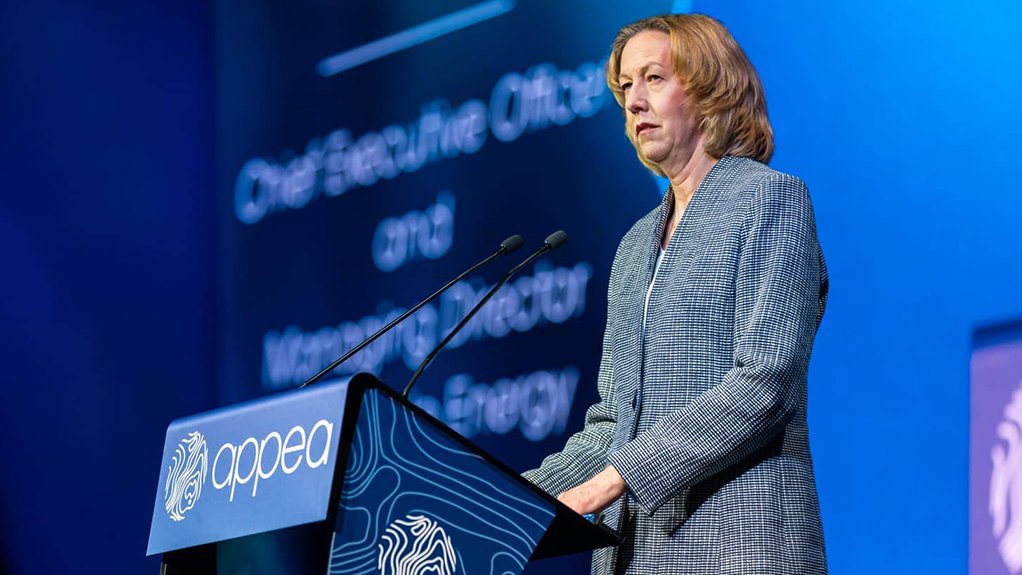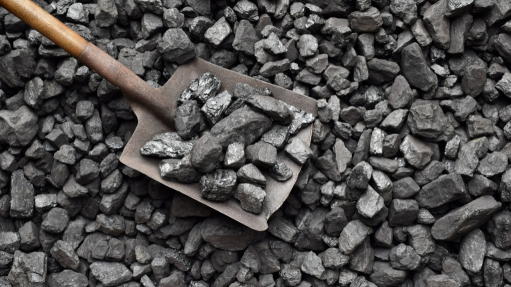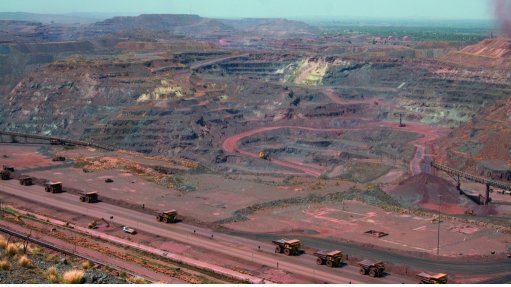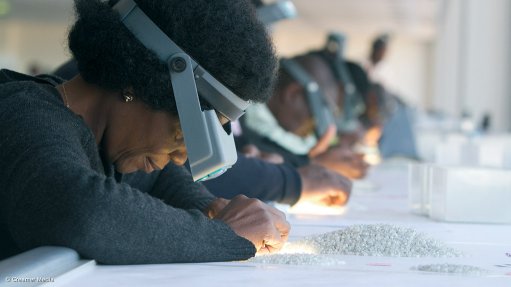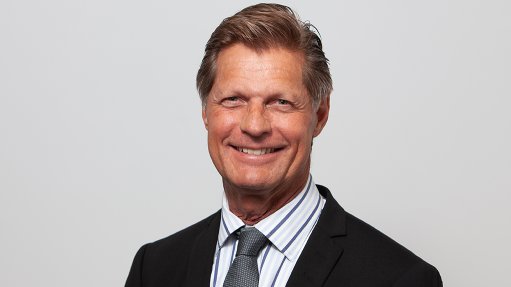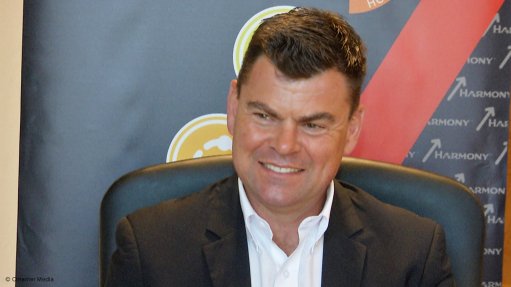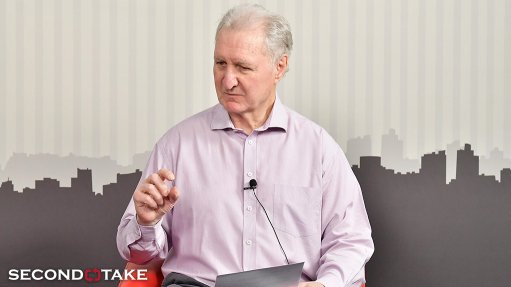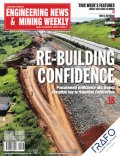Appea calls for national CCUS strategy
PERTH (miningweekly.com) – The oil and gas industry has called on the federal government to jointly develop a national carbon capture, utilisation and storage (CCUS) strategy.
Speaking at the Australian Petroleum Production & Exploration Association (Appea) 2023 conference, Appea chairperson and Woodside CEO and MD Meg O’Neill said that CCS would be critical in getting to the net zero targets.
“It does work. The Sleipner project in Norway has been storing one-million tonnes of carbon dioxide (CO2) per year, deep below the North Sea, since 1996. The technology has been used in the US for decades. It is a technology that is backed by the International Energy Agency and the Intergovernmental Panel on Climate Change. Both of those agencies say CCS will be critical in getting to net zero,” O’Neill said.
“This is why we want to work with the Australian government on the development of a national CCUS strategy, to provide policy direction, to progress priority carbon management hubs and to promote Australia as a regional CO2 storage leader.
“Countries in the region with limited CO2 storage potential, such as Japan and South Korea, are looking for partners to establish hubs to meet their own net-zero commitments. Our gas industry is extremely well placed to be that partner and develop CCUS, given our expertise in geological storage and large infrastructure projects,” she told delegates at the conference.
O’Neill said that there should also be collaboration between Appea members, where possible, pointing to recent analysis commissioned by the industry body that found that most of Australia’s hard-to-abate sectors operate near each other.
“It shows these places could effectively be grouped into nine regional zones. The Pilbara, in Western Australia, could be one, as could Central Queensland and the Cooper Basin, right here in South Australia.
“Each of these regions requires the same four building blocks to reach net zero. Those building blocks are renewable energy, natural gas, CCUS and low-carbon hydrogen. By prioritising the development of CCUS projects across these nine regions, in partnership with energy producers, manufacturers and government, our industry can play a leading role in decarbonising hard-to-abate sectors across the economy,” O’Neill said.
“In a way, it’s like carpooling emissions, with the goal of reaching net zero as quickly and cost efficiently as we can. But this will only happen if Australia gets the investment environment right. And at the moment other countries are leading the way.”
O’Neill noted that about two-thirds of planned CCUS investments globally are in the US, Canada and Europe, where they are supported by mechanisms such as the Inflation Reduction Act in the US, which offers $394-billion worth of incentives and Acts in the UK that offer £20-billion of investment incentives.
O’Neill said that hydrogen production also offered another significant opportunity for the oil and gas sector, as it can be used in transport and power generation, and complements liquefied natural gas (LNG) as an energy export in this region.
“The challenge we face of course is scaling up from where we are today, with less than one-million tonnes of lower carbon hydrogen currently being produced worldwide. Now we know there’s strong demand for hydrogen and the oil and gas sector has the technical and commercial expertise to meet that demand,” she said.
“All production pathways need to be on the table, with the emissions intensity of the hydrogen produced being really the most important metric to consider.”
The International Energy Agency (IEA) estimates that by 2030, approximately 60% of hydrogen production will come from renewable energy and 40% will come from natural gas with CCUS.
The IEA further highlights 80% of the largest renewable base hydrogen projects under construction globally, are being developed by oil and gas companies or will supply hydrogen to refineries.
“The further proof point that our sector is core to this transition. Now the A$2-billion Hydrogen Headstart programme, announced by the federal government last week, recognises the importance of hydrogen to reaching net zero across Australia.
“These certainly are great starts but it would be strengthened by the inclusion of low carbon hydrogen from natural gas with CCUS, which today represents the lowest cost and most advanced pathway available,” O’Neill said.
Comments
Press Office
Announcements
What's On
Subscribe to improve your user experience...
Option 1 (equivalent of R125 a month):
Receive a weekly copy of Creamer Media's Engineering News & Mining Weekly magazine
(print copy for those in South Africa and e-magazine for those outside of South Africa)
Receive daily email newsletters
Access to full search results
Access archive of magazine back copies
Access to Projects in Progress
Access to ONE Research Report of your choice in PDF format
Option 2 (equivalent of R375 a month):
All benefits from Option 1
PLUS
Access to Creamer Media's Research Channel Africa for ALL Research Reports, in PDF format, on various industrial and mining sectors
including Electricity; Water; Energy Transition; Hydrogen; Roads, Rail and Ports; Coal; Gold; Platinum; Battery Metals; etc.
Already a subscriber?
Forgotten your password?
Receive weekly copy of Creamer Media's Engineering News & Mining Weekly magazine (print copy for those in South Africa and e-magazine for those outside of South Africa)
➕
Recieve daily email newsletters
➕
Access to full search results
➕
Access archive of magazine back copies
➕
Access to Projects in Progress
➕
Access to ONE Research Report of your choice in PDF format
RESEARCH CHANNEL AFRICA
R4500 (equivalent of R375 a month)
SUBSCRIBEAll benefits from Option 1
➕
Access to Creamer Media's Research Channel Africa for ALL Research Reports on various industrial and mining sectors, in PDF format, including on:
Electricity
➕
Water
➕
Energy Transition
➕
Hydrogen
➕
Roads, Rail and Ports
➕
Coal
➕
Gold
➕
Platinum
➕
Battery Metals
➕
etc.
Receive all benefits from Option 1 or Option 2 delivered to numerous people at your company
➕
Multiple User names and Passwords for simultaneous log-ins
➕
Intranet integration access to all in your organisation



